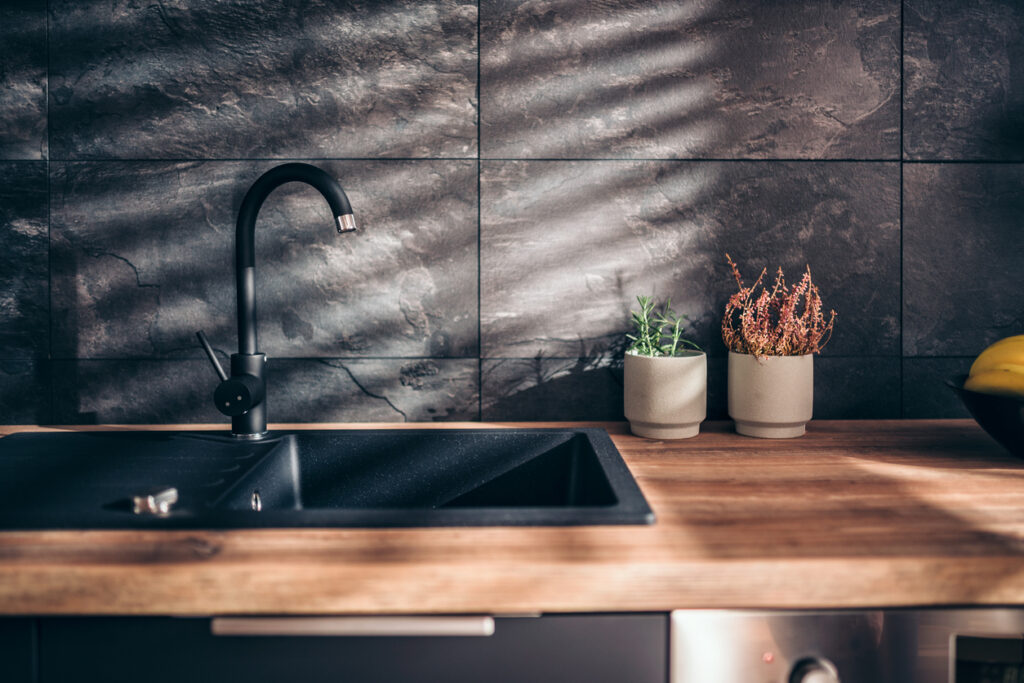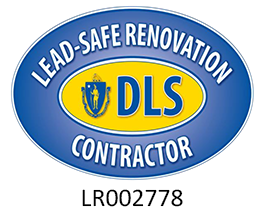There was a time when kitchen sinks were just kitchen sinks. They were simply places to deposit and wash dirty dishes, rinse fruit and vegetables, and fill large pots with water. And they certainly didn’t come in the variety of styles, sizes, shapes, and, most importantly, materials they do today.
Which is why choosing just the right kitchen sink material can seem daunting. Not all are designed to withstand the stains, scratches, and scuffs that a sink may have to endure. Read on as we look at some of the most popular kitchen sink materials so that you can choose the one that will work best in your home.

Stainless Steel – The most popular material for kitchen sinks, stainless steel delivers a sleek, contemporary look while being affordable, sturdy, and easy to clean. Look for 16-to-18-gauge steel which offers more durability. While perfect for all types of uses, they do tend to be noisy and show water spots.
Copper – A copper sink is not only attractive and durable, but its antimicrobial properties can also kill up to 99.9 percent of bacteria. Quite the perk considering the kitchen sink can be a breeding ground for germs. This warm, rosy-colored material can set you back up to $1200 depending on style, size, and brand. But be wary of low-priced options that may contain thinner gauge metal that damages more easily.
Enamel – A timeless sink material, enamel has a softer look than stainless steel. It’s constructed of cast iron with a glass-based glaze and is available in a variety of colors. However, even though it has a long lifespan, enamel is prone to chipping and staining so use non-abrasive sponges to avoid scratching. As such, these sinks are best for light to medium use. Enamel sinks are heavy so you may need to reinforce countertops and cabinetry.
Fireclay – These sinks resemble traditional cast iron enamel but are molded from white clay fused with glaze, then heated to extremely high temperatures. This makes them more resistant to staining and scratching. Like traditional enamel, a fireclay sink will also need additional support. Each sink is hand-crafted and comes with a much higher price tag – up to double that of regular enamel.
Solid Surface – One of the most affordable options, solid surface sinks are made from a manmade acrylic resin that has the look of enamel without the price tag. However, this also means they have a shorter lifespan, are prone to scratches, are sensitive to extreme heat, and may discolor over time. Be wary of cheaper solid surface sinks which may contain a calcium powder filler that will cause the sink to yellow quickly.
Stone – Imagine the show-stopping beauty of a marble, granite, or petrified wood kitchen sink! Because they are carved from a single block, the variations in tone and texture are preserved. Stone sinks are durable, heat resistant, and long-lasting. With proper sealing they can resist scratching, staining, and damage from harsh cleaning products. They are also heavy and expensive.
Composite – Composite sinks offer the appeal of stone without the hefty price tag. Made with a blend of quartz dust and acrylic resins, composite is extremely durable, doesn’t need sealing, and is available in a wide range of styles, sizes, shapes, and colors. However, extreme heat can crack or damage the surface so let pots and pans cool a bit before placing them in the sink.
Who knew selecting a kitchen sink was so complicated? With Pann on your side, it doesn’t have to be. From sink installation to plumbing repairs to complete kitchen remodeling, Pann Home Services can do it all. Contact us today for more information to a free in-home proposal.









